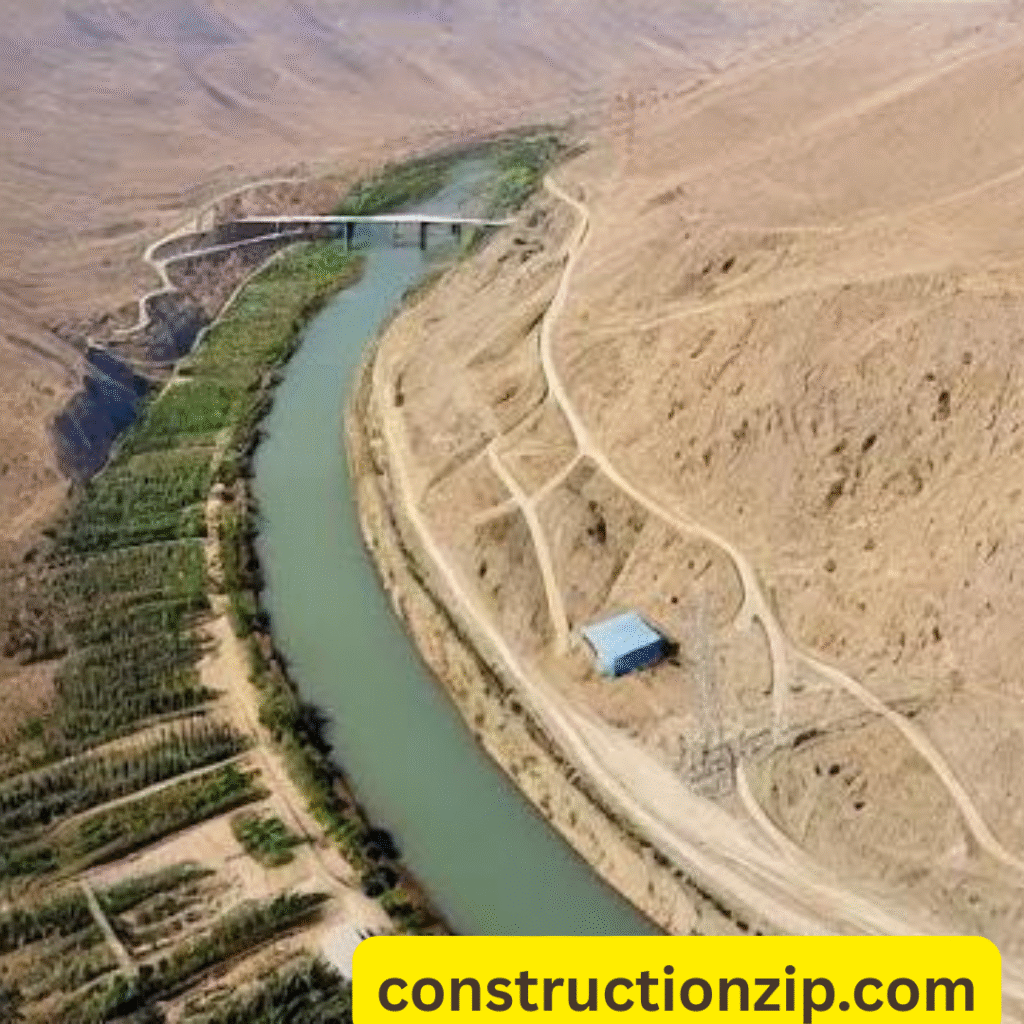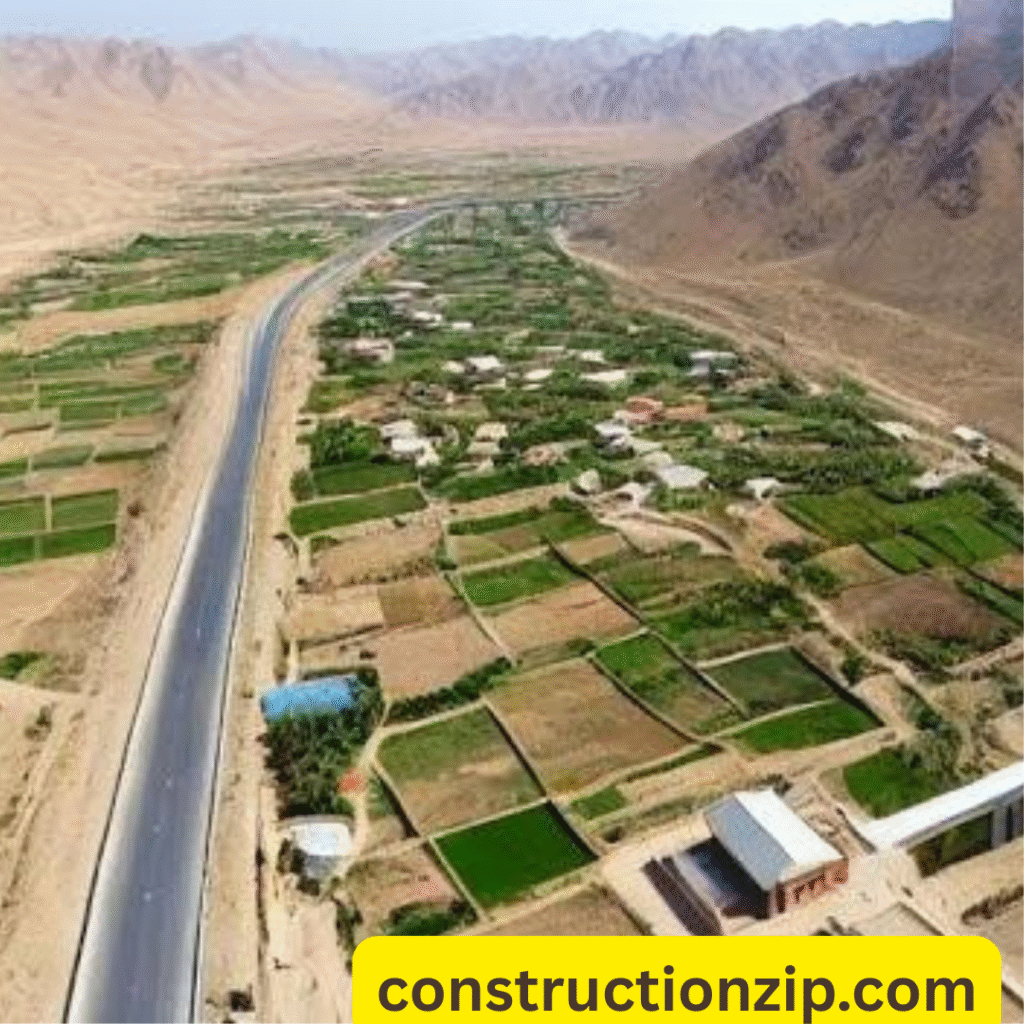In a land long known for conflict, instability, and economic hardship, a quiet revolution is underway—one that doesn’t involve politics or war, but instead cranes, concrete, canals, and cables. Afghanistan is rolling out some of the most ambitious infrastructure megaprojects in its history, and despite the odds, these developments may redefine its future. From diverting rivers through barren desert lands to connecting entire continents with electricity, Afghanistan’s current undertakings in 2025 are nothing short of breathtaking.
But can these bold efforts revive a struggling economy and elevate millions from poverty? Or will they crumble under the weight of technical, environmental, and geopolitical challenges?
Let’s dive into the five major megaprojects currently under construction in Afghanistan and uncover the incredible scope, potential benefits, and looming controversies surrounding each one.
1. The Kosh Tepa Canal – A Man-Made River of Hope
Imagine cutting a 285-kilometer-long artificial river through arid desert—it’s not science fiction, it’s Afghanistan’s Kosh Tepa Canal, one of the nation’s largest infrastructure projects ever attempted. The canal is poised to transform the landscape by converting vast swaths of barren land into lush, productive farmland.
Project Highlights
| Feature | Detail |
|---|---|
| Total Length | 285 kilometers |
| Irrigated Area | 550,000 hectares |
| Start Year | 2022 |
| Completion Target | 2028 |
| Provinces Benefited | Balkh, Jowzjan, Faryab |
| Construction Progress (as of Dec 2024) | 81% of Phase 2 completed |
What makes this canal monumental is not just its scale, but its impact: it’s expected to bring life back to over half a million hectares of farmland—more than the entire area of Luxembourg. This is no ordinary irrigation project; it’s a full-blown agricultural revival.
Construction began in early 2022 under the Taliban government, which made the canal a top national priority. According to satellite imagery, between April 2022 and February 2023, over 100 km of the canal was excavated using basic earthmoving tools. The initial 108 km segment was completed by October 2023 using traditional “cut and fill” methods—digging soil from high ground and moving it to fill lower areas.
The main channel spans up to 100 meters wide in some areas, branching out like tree roots via smaller channels to distribute water evenly across the farmland. Basic sluice gates, constructed from local materials, regulate water flow along the route.
Challenges and Concerns
Despite the rapid pace of construction, not all experts are convinced. Many raise concerns about the rudimentary engineering methods being used, fearing significant water leakage or erosion. In December 2023, satellite footage captured a 9-kilometer canal segment that flooded surrounding lands—officials called it a “controlled event,” but skeptics remain.
Moreover, the canal is raising diplomatic alarms. Uzbekistan, which depends on the Amu Darya River for irrigation, is worried that the Kosh Tepa Canal will siphon off too much water. Environmental activists warn that it could worsen the Aral Sea crisis, already one of the world’s worst ecological disasters.
Still, if successful, the canal could double Afghanistan’s cultivated land, which shrank from 3.5 million hectares in the 1970s to only 1.5 million today—a stunning comeback in the making.
2. Kabul New City (KNC) – Building a Capital from Scratch
Afghanistan’s capital, Kabul, is bursting at the seams. Overcrowded, under-resourced, and struggling with poor infrastructure, it’s clear that expansion is overdue. Enter Kabul New City (KNC)—a visionary project that’s more than an extension; it’s an entirely new capital being constructed adjacent to the current one.
Project Highlights
| Feature | Detail |
|---|---|
| Total Area | 740 square kilometers |
| Planned Population | 3 million |
| Phase 1 | Parcel B (250 hectares) |
| Residential Units | 2,300 homes |
| Supporting Facilities | Schools, hospitals, commercial buildings |
| Design Assistance | Japanese planners |
| Construction Start | August 2023 |
To put it into perspective, KNC will be one and a half times larger than present-day Kabul. The city will span five districts and include everything a modern metropolis needs: roads, water and power systems, schools, healthcare facilities, and housing.
The first step, Parcel B of Phase 1, involves constructing 2,300 residential units capable of housing 12,000 people, alongside commercial areas and essential services.

Major Obstacles
This isn’t the first attempt at building KNC. Back in 2016, the project came to a halt when angry landowners protested construction in Dehsabz District. Add in Afghanistan’s chronic security issues and political instability, and it’s no surprise the project saw delays.
Officials now claim to be handling things differently—tackling corruption head-on and engaging local communities. If they can follow through, KNC could relieve pressure from Kabul’s overcrowded infrastructure and offer Afghans a clean, well-planned urban lifestyle.
3. Pashtan Dam – A Lifeline for Western Afghanistan
While Kabul dreams of sleek skylines, Western Afghanistan is focusing on something more fundamental—water security. Just 15 km outside Herat lies the Pashtan Dam, an embankment dam set to become a vital source of irrigation and hydropower.
Project Highlights
| Feature | Detail |
|---|---|
| Total Cost | $17 million |
| Canal Network | 70 km |
| Irrigated Area | 13,000 hectares |
| Hydropower Capacity | 2 megawatts |
| Completion Progress | 80% as of late 2024 |
| Construction Start | 2011 |
Initiated in 2011, the dam suffered years of delays, especially after the 2021 government collapse, which left Indian-donated machinery sitting unused. However, construction is now moving again, with workers racing to complete the reservoir wall and water intake systems before the seasonal floods of winter.
The structure uses five 6-meter-wide radial gates for flood control and features a spillway capable of handling 450 cubic meters of water per second.
Community Impact
Although still incomplete, Pashtan Dam has already become a popular local hangout. Families picnic by its shores, hoping for a better future when the dam supports local wheat and saffron farms. Officials say the dam will transform Herat’s economy by improving crop yields and generating sustainable employment.
4. Bakshabad Dam – Taming the Farah River
If Pashtan is impressive, Bakshabad Dam is monumental. Rising from the Farah River valley, this megastructure is one of Afghanistan’s most significant water projects to date.
Project Highlights
| Feature | Detail |
|---|---|
| Dam Height | 81 meters |
| Water Storage Capacity | 1.36 billion cubic meters |
| Irrigation Coverage | 180,000 hectares |
| Canal Flow Rates | 26 & 25 cubic meters/sec (North/South) |
| Power Output | 27–32 megawatts |
| Initial Design Year | 1976 |
| Restarted Construction | 2023 |
| Funding Boost | $500 million (Qatar) |
The dam’s massive reservoir will store 26 times more water than the nearby Kamal Khan Dam, making it the largest in the region. Its power plant will light up all of Farah Province—fifteen times over.
Environmental & Geopolitical Risks
But controlling 98% of the Farah River’s flow comes with consequences. Downstream lies the Hamun wetlands in Iran—an internationally protected ecosystem already at risk. Without a water-sharing agreement, this project could ignite major transboundary disputes.

Nonetheless, for farmers in Farah, the dam offers hope: a chance to transition from low-value crops like wheat and poppy to more profitable alternatives, potentially transforming the region’s economy.
5. CASA-1000 – Afghanistan’s Energy Superhighway
Last but not least is the CASA-1000 power corridor—a $1.2 billion mega-network set to turn Afghanistan into an energy transit hub between Central and South Asia.
Project Highlights
| Feature | Detail |
|---|---|
| Total Length | 1,387 km |
| Afghanistan Section | 789 km |
| Energy Delivered | 4.6 billion kWh/year |
| Afghanistan’s Share | 300 MW + $50M/year in fees |
| Pakistan’s Share | 1,000 MW |
| Main Backers | World Bank, Islamic Dev Bank, USAID |
| Construction Status | 95% complete in Tajikistan (as of 2024) |
CASA-1000 connects Kyrgyzstan and Tajikistan to Pakistan via Afghanistan, transmitting surplus hydroelectric power during the summer months. This isn’t just a wire; it’s a strategic artery using high-voltage direct current (HVDC) systems for efficient transmission.
Dual Benefits for Afghanistan
Afghanistan gains in two major ways: First, it receives 300 megawatts of electricity—badly needed to ease blackouts. Second, it earns up to $50 million annually in transit fees, a major income stream for the country.
Plus, an open-access feature allows other Central Asian countries to use spare line capacity during winter.
Final Thoughts: Can These Projects Change Afghanistan?
Afghanistan’s five megaprojects—Kosh Tepa Canal, Kabul New City, Pashtan Dam, Bakshabad Dam, and CASA-1000—represent more than just steel and concrete. They are symbols of a country trying to redefine itself from the inside out.
These ventures could revitalize agriculture, supply clean energy, expand urban development, and reshape Afghanistan’s role in the regional economy. Yet they come with their fair share of risks: environmental impacts, engineering shortcomings, water disputes, and security concerns.
Recap Table: Afghanistan’s 2025 Megaprojects
| Project | Sector | Key Benefits | Major Risks |
|---|---|---|---|
| Kosh Tepa Canal | Agriculture | 550,000 hectares irrigated | Water loss, regional tensions |
| Kabul New City | Urban Development | 3 million-person smart city | Land disputes, delays |
| Pashtan Dam | Irrigation & Energy | 13,000 hectares + 2 MW | Seasonal flooding, equipment loss |
| Bakshabad Dam | Irrigation & Energy | 180,000 hectares + 32 MW | Ecological damage to Iran wetlands |
| CASA-1000 | Energy Transit | 300 MW + $50M/year | Geopolitical instability |
These five projects are writing a new chapter in Afghanistan’s long, complex story. Whether that chapter becomes one of triumph or tragedy will depend on execution, diplomacy, and a bit of resilience—something Afghans have in abundance.